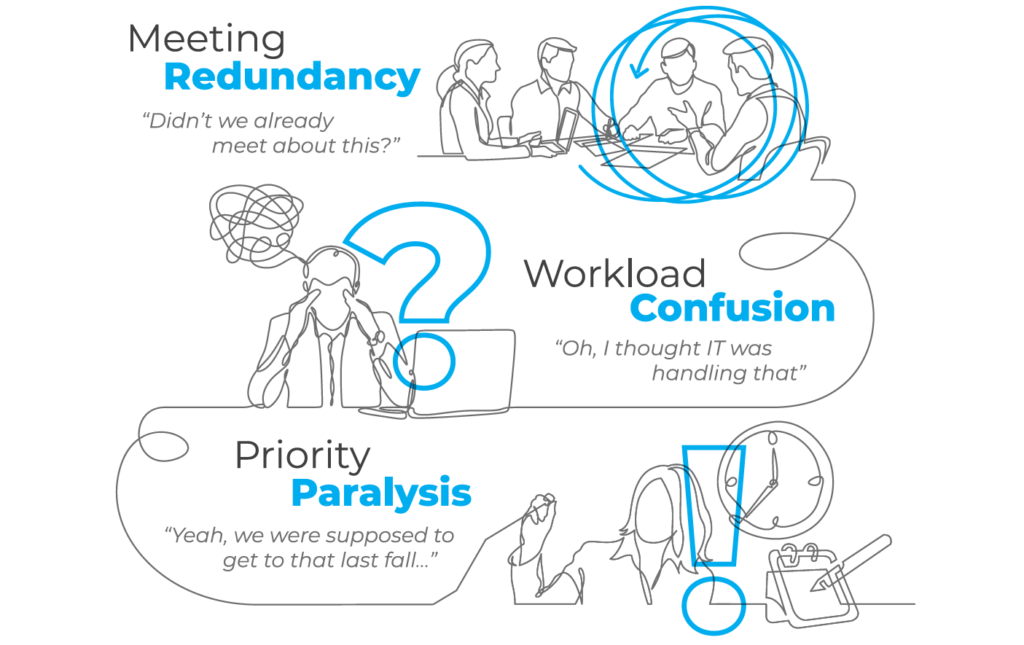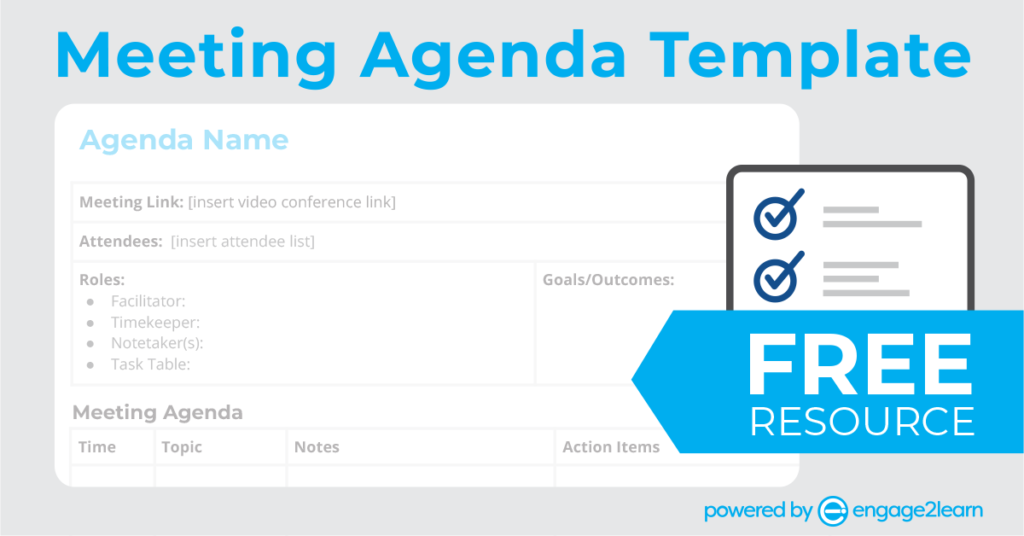5 Components of Effective Virtual 1:1 Meetings
We’ve probably all heard the joke, “I survived another meeting that could have been an email.” Bold, but true.
In fact, studies show that a lot of time really is wasted in unnecessary or ineffective meetings. One study by Atlassian, for example, revealed that employees spend on average 31 hours a month in unnecessary meetings, which in turn have cost U.S. businesses $37 billion dollars in salaries. Employees also reported feeling that a staggering half of all meetings were a waste of time.

In the pandemic era, virtual meetings have become the new norm. Unfortunately, virtual meetings have the potential to be even more unproductive because, in many cases, participants are not actually visible in the meeting. So, how can leaders ensure productive meetings in a remote environment?
engage2learn (e2L) has been a virtual organization working remotely for our entire existence, and over the last eleven years, we have developed an intentional and effective virtual meeting system by:
- Intentionally establishing a high-performance culture,
- Implementing consistent meeting protocols,
- Creating a team-of-teams approach,
- Following a standing meeting system (proactive) instead of “called meeting chaos” (reactive), and
- 1:1s.
While all of these pieces are vital to the meeting puzzle, this blog will focus on 5 key components of effective and efficient 1:1 meetings – the backbone of our productivity.
1: Agendas
Keeping virtual 1:1s lean and intentional requires a reliable format. Best practices for this include conducting 1:1s at the same time every week with a running meeting agenda so each participant knows what to expect and can prepare accordingly.
Studies show that only 37% of meetings in the US use agendas. That means that 63% of meetings are at risk of getting off-topic and potentially wasting your and your employees’ precious time. Because it can be easy to lose focus, an agenda provides a plan that lets meeting participants get back on track with ease. Here are some meeting agenda must-haves:
- Privacy
Agendas should always be attached to the meeting invite while remaining private to only the participants to ensure confidential and honest ideation. - Need-to-Knows (N2Ks)
Your organization may have a different name for this section, but it should serve as a place for documenting any important information that both participants need to be aware of before moving forward into project discussions and ideation. - Priorities
Each agenda must highlight that week’s priority projects and tasks to identify the current focus and workload. - Progress Updates
Maintain a section dedicated to ongoing project progress updates in order to stay on track and/or adjust project timelines as needed. - Problems/Solutions
Make sure to leave space to discuss potential problems and ideate solutions together. - Action Items
In each section of the agenda, there should be space for documenting and assigning clear action items so meeting participants know exactly what’s expected of them before the next meeting.

2: Roles
The 1:1 is a collaborative effort, with each attendee engaged in a specific role. The manager, leader, or coach listens, assists with note-taking, and acts as an accountability or thought partner during ideation, while the managee or coachee creates the agenda before the start of the meeting, takes the initiative as the facilitator, and documents assigned tasks to be completed in the following week before the next 1:1 meeting.
Having this clarity in roles at the beginning of every meeting helps each participant understand what is expected of them and allows them to come to the meeting prepared to engage accordingly.
| RELATED: 5 Quick Tips for Virtual Meetings That Work |
3: Consistency
Consistency and productivity go hand-in-hand, especially in the case of virtual 1:1s. Designating time every week to collaborate, conduct a progress update, and answer N2Ks eliminates other forms of unnecessary communication (i.e., interruptions) throughout the rest of the week. Meeting attendees can keep the running agenda open to add ideas, questions, and updates as they come up throughout the week, knowing those items will be addressed in the next meeting.
Thus, it’s important to keep this meeting prioritized on the calendar every week at the same time, rescheduling or moving to a written/offline format only when absolutely necessary.
For example, I have a 1:1 every day at 8:30am for one hour and another at 9:30am for 30 minutes. Even as CEO, I schedule all other meetings around my designated 1:1s. This time is critical for our organization to stay agile and continue to exceed our partners’ expectations, and everyone knows I will not sacrifice this time. The 1:1s should always start and stop on time to maintain efficiency and expectations for each participant. Within five minutes of the close of the meeting, if there are still things to discuss that can’t wait until the next week, a participant can always schedule an additional meeting to continue the conversation.
4: Waterfall
Everyone in our entire organization participates in at least one weekly 1:1. This is key to not only maximizing productivity but also overall engagement. And these 1:1s are not only for leaders with direct reports! Every person meets with someone they need as either a decision-maker or collaborator. The scheduled time can vary from 15 minutes to one hour depending on the relationship, but every employee gets some form of weekly check-in or connection.
The fluidity of the waterfall happens when decisions, information, questions, and answers flow through the organization via the 1:1 system throughout each week. For example, I have weekly 1:1s with each of my Chiefs, who often bring decisions to me that have stemmed from their 1:1s with those they coach, eliminating the need for a group meeting or additional time on the calendar to discuss.
No matter the structure, nobody is waiting more than seven days for an answer to anything.
This keeps the ball rolling on projects throughout the organization and helps free up any potential bottlenecks in decision-making.
| RELATED: How to Set Up a Virtual Meeting System and Protocols |
5: Project Management
The final component of an effective 1:1 system is managing the execution of all action items. A common killer of productivity is time spent sitting in conversations that everyone walks away from and forgets about. Therefore, 1:1s need to end with action items recorded on the agenda but also in some type of project management system with assignee(s), clear task descriptions, and deadlines. My team utilizes Wrike as our project management system to ensure that everyone is clear on action items and no action item goes undocumented.
The idea of a weekly virtual 1:1 may sound like a large time commitment, but making it a part of your company culture will end up saving you so much more time in the long run. With a highly effective meeting system in place, your team will not only become more productive but will thank you for sparing them from those meetings they wish would have been an email!



